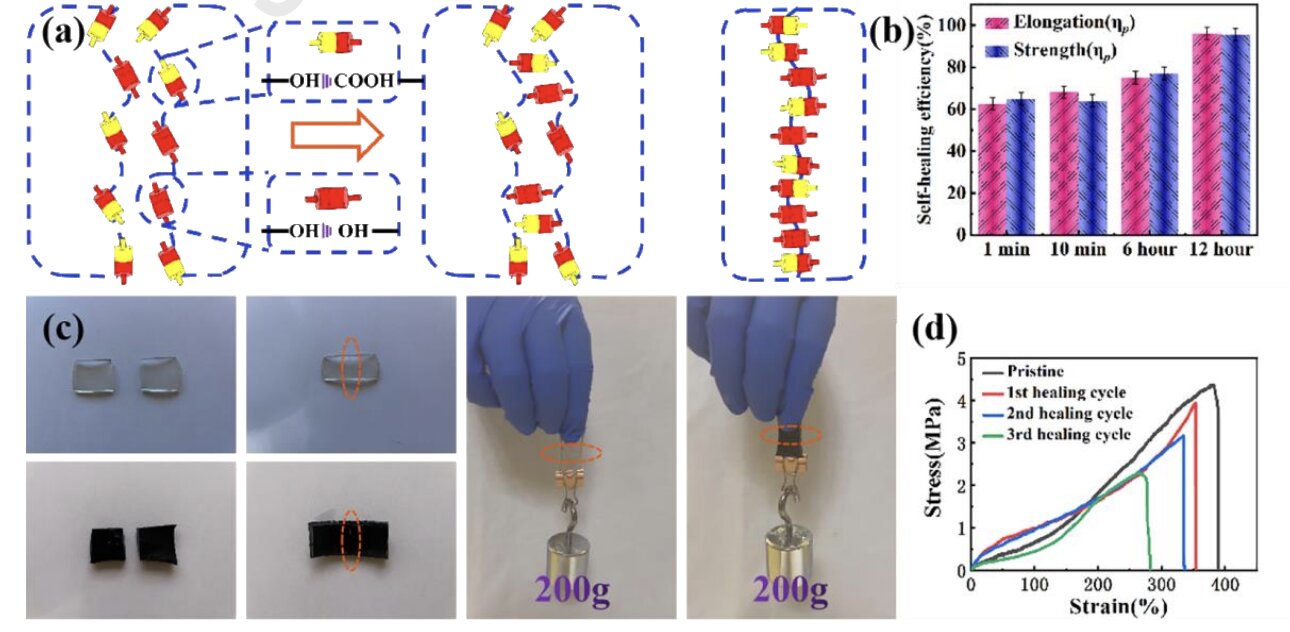Recent developments in electronics have led to the creation of smaller and more advanced devices, such as wearable technologies, biosensors, medical implants, and soft robots. These technologies are often made from stretchy materials with electronic properties.
However, many of the flexible materials used in these devices are fragile and easily damaged, which can compromise their overall functioning and reliability. To address this issue, researchers at Harbin University of Science and Technology in China have developed a new conductive and self-healing hydrogel that could be used to create flexible sensors for wearables, robots, and other devices.
The material, which was outlined in the Journal of Science: Advanced Materials and Devices, was created by introducing an organic compound called 4-carboxylbenzaldehyde (CBA) into a water-soluble synthetic polymer called polyvinyl alcohol (PVA), and adding the conducting polymer polyaniline (PANI) via an electrostatic interaction. The resulting material had remarkable mechanical properties and could heal itself after being damaged, with a maximum stress of 4.35 Mpa and a maximum strain of 380%.
According to the researchers, the hydrophobic association of PVA and CBA ensures the mechanical properties of the hydrogel sensor, while the introduction of PANI brings electrical properties to the material. This new conductive and self-healing hydrogel could be a promising solution for creating reliable and durable flexible sensors for a variety of applications.




















